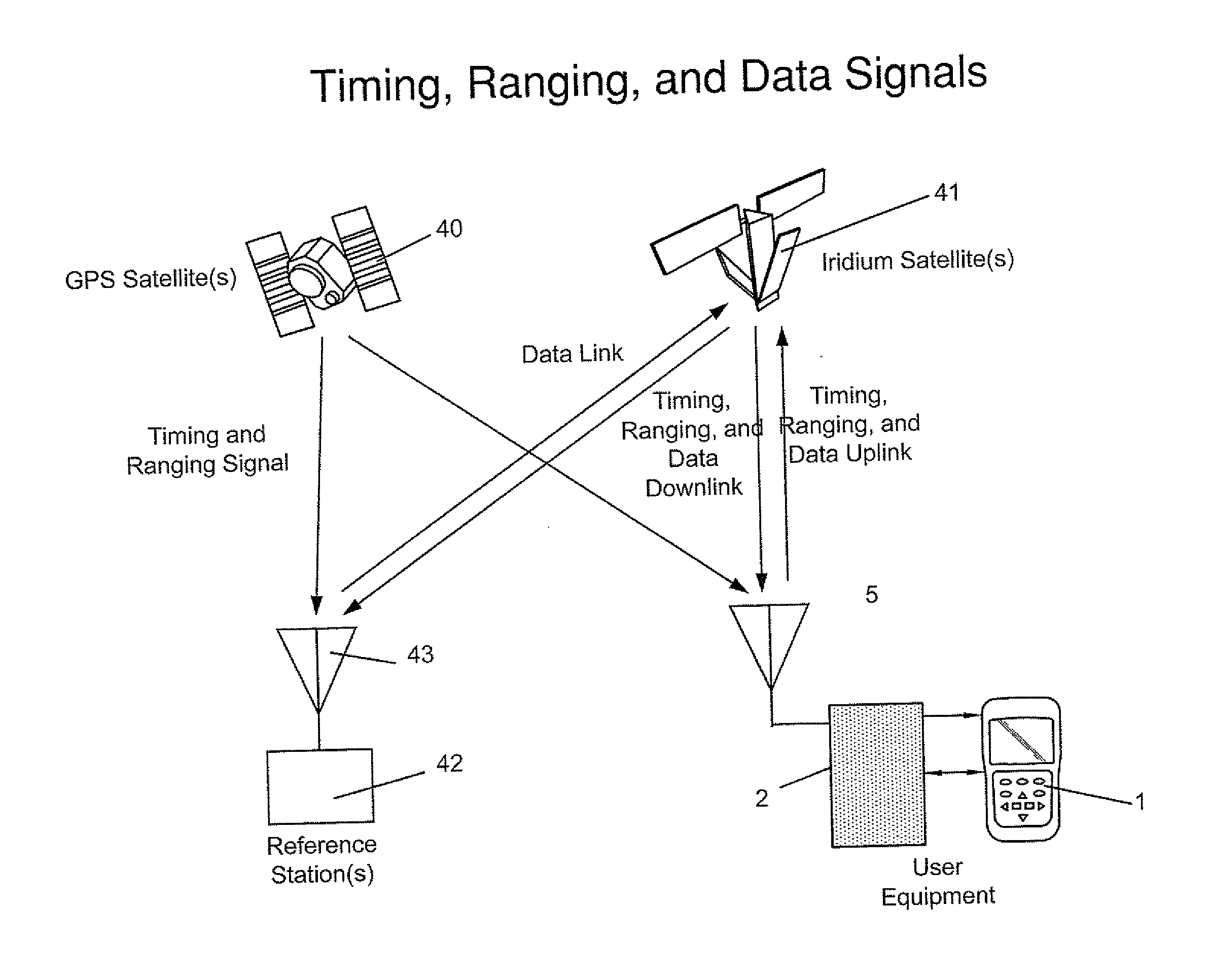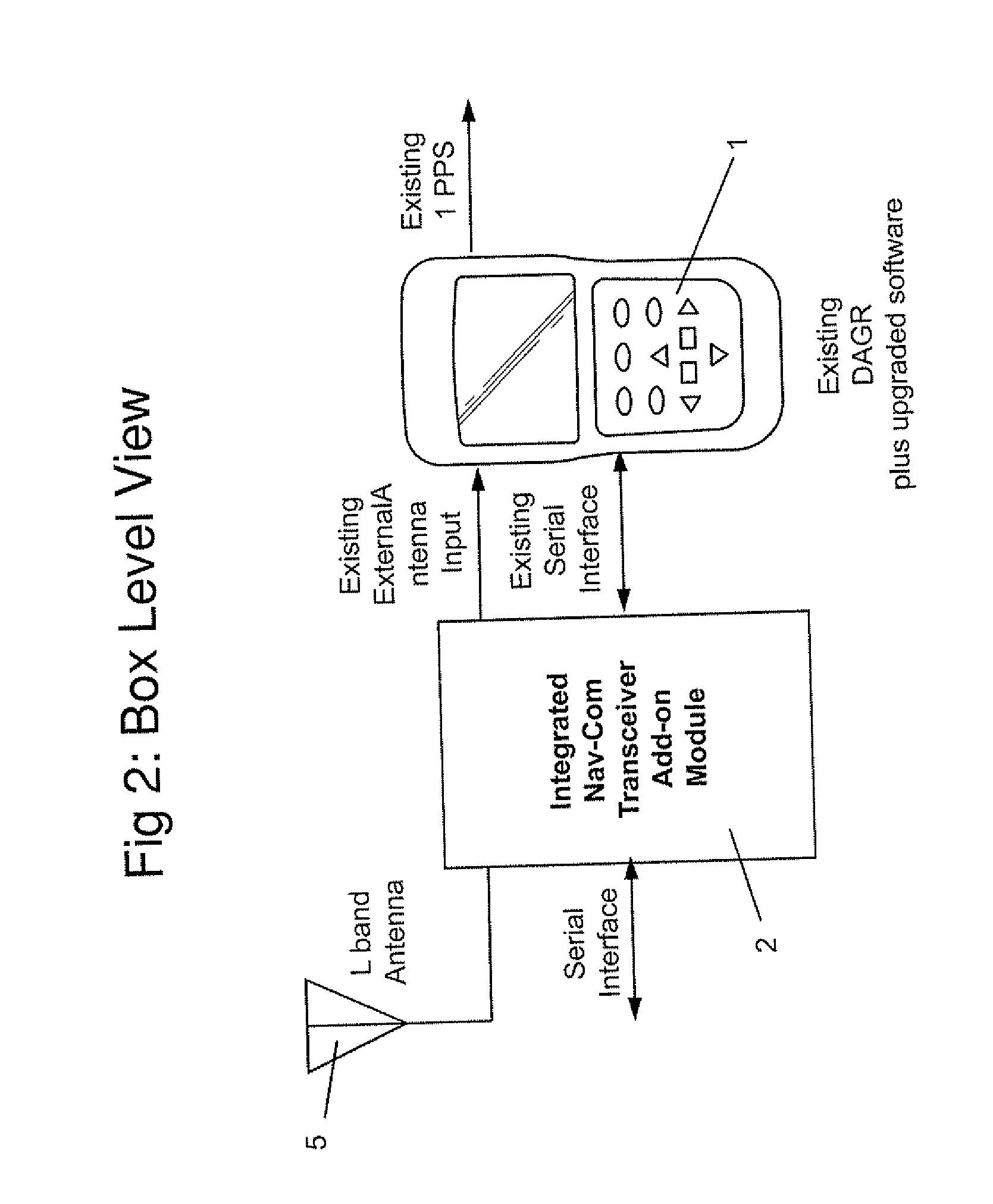Practical Method for Upgrading Existing GNSS User Equipment with Tightly Integrated Nav-Com Capability
a technology of global navigation satellite system and user equipment, applied in satellite radio beaconing, measurement devices, instruments, etc., can solve the problems of user and device not being able to authenticate with the key management authority, the effect of squaring both signals and noise, and cumbersome process
- Summary
- Abstract
- Description
- Claims
- Application Information
AI Technical Summary
Benefits of technology
Problems solved by technology
Method used
Image
Examples
Embodiment Construction
[0039]FIGS. 1 and 2 are top-level functional drawings showing an upgraded GNSS system including existing GNSS user equipment, illustrated as a Defense Advanced GPS Receiver (DAGR) 1, and enhanced user hardware constructed in accordance with the principles of a preferred embodiment of the invention, which may optionally take the form of a separate add-on enhancement module 2 illustrated in FIG. 2. The enhanced user hardware is arranged to plug into existing interfaces to the user equipment, which in the exemplary DAGR include a two-way serial port 3 and an external antenna input 4.
[0040]Those skilled in the art will appreciate that it is also within the scope of the invention to adapt or modify the illustrated user hardware and method to GNSS user equipment other than a DAGR. In addition, those skilled in the art will appreciate that while the invention eliminates the need to modify existing GNSS hardware in order to implement tightly integrated Nav-Com capability, such hardware may ...
PUM
 Login to View More
Login to View More Abstract
Description
Claims
Application Information
 Login to View More
Login to View More - R&D
- Intellectual Property
- Life Sciences
- Materials
- Tech Scout
- Unparalleled Data Quality
- Higher Quality Content
- 60% Fewer Hallucinations
Browse by: Latest US Patents, China's latest patents, Technical Efficacy Thesaurus, Application Domain, Technology Topic, Popular Technical Reports.
© 2025 PatSnap. All rights reserved.Legal|Privacy policy|Modern Slavery Act Transparency Statement|Sitemap|About US| Contact US: help@patsnap.com



